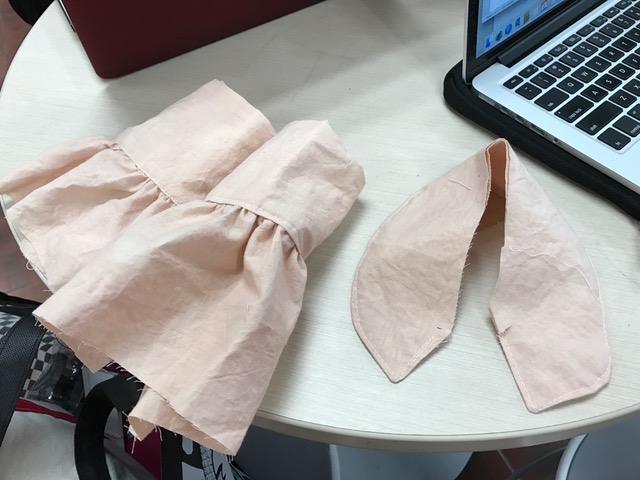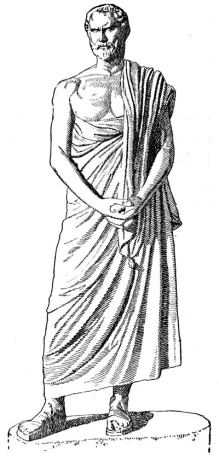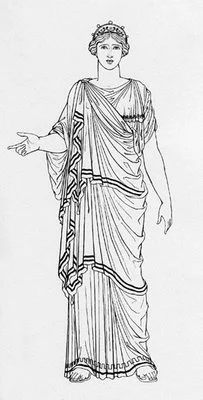The history of natural dyes dates back to 2600 B.C. According to Juliette Donatelli, ‘Originally, dyes were made with natural pigments mixed with water and oil used to decorate skin, jewelry and clothing. Those same dyes were also used for painting prehistoric caves, which emerged in places like El Castillo, Spain, some 40,000 years ago.’ It is said that Anthropologists believe that the origins of early coloring started with accidental staining. This staining could have come across by the coloring from berries, nuts, roots by the earliest people and just copied by them. Also, an example for this is that there have been chemical tests that show that in the red fabrics of King Tutankhamen there shows traces of Alizarin. This is a pigment from madder and the madder plant. Even though it seems as though natural dyes have become a new technique because a lot of the modern small business or fashion companies that would rather put more dedication into their designs by having everything organic or homemade. However, from this historic background, it shows how hard it is to believe that natural dyes have actually existed for so many years.
When talking in regards to natural dyes, one must think about the many ways people would dye during the that time. The three most common forms of dyes were from plants such as indigo, animals such as cochineal, and minerals such as ocher. Aside from those resources, there were other ways to dye such as using weeds, garden flowers, clay, and food byproducts. To further more the explanation, natural dyes can easily work on fabric. However, it will only work depending on what dye is being worked on. According to Kris Driessen, ‘Although some fabrics such as silk and wool can be colored simply by being dipped in the dye, others such as cotton, require a mordant. A mordant is an element which aids the chemical reaction that takes place between the dye and the fiber so that the dye is absorbed. Containers used for dying must be non-reactive (enamel, stainless steel.) Brass, copper or iron pots will do their own mordanting. Not all dyes need mordants to help them adhere to fabric. If they need no mordants, such as lichens and walnut hulls, they are called substantive dyes. If they do need a mordant, they are called adjective dyes.’ Even though using a natural dye is easy to in many ways easier to use, it is important to know that it will not always attach to a fabric because not all fabrics are created equal. Like mentioned in the previous quote, sometimes it is important to give your fabric a push to help bring together the dyes onto whatever item wants to be dyed. This is what the people of the 19th Century had to do in order to be able to work on their fabrics.
It is also necessary to mention that even though natural dye was the only form of coloring clothing, there have now been modern techniques to dye. The other common form of dying that exists is now synthetic dye. It is used with chemicals that are easy bought and it is an ordinary way to dye anything at anytime. There is no hassle to dye like how it used to be back in the 19th Century times. There is no necessity of specific things like mordants needed when trying to dying specific fabrics such as cotton. Cotton is a hard fabric to dye unlike silk, so synthetic dyes are easy used on whatever a person may need to dye. According to Juliette Donatelli, ‘It is estimated that over 10,000 different dyes and pigments are used industrially and over 7 x 105 tons of synthetic dyes are annually produced worldwide.’ That seems to be a lot of dyes compared the the common forms that existed so long ago. Even though synthetic dyes are simpler and so accessible, it is easy to look across the effects that synthetic dyes can have. Just like anything inorganic, there are risk that come with dealing with unrealistic items. They are toxic chemicals that can easy be transferred onto a person’s skin especially if they have open pores, such as when the body is warm.
Now that natural dyes are a historical aspect, there are many explanations as to how the dyes came about and how the first people were able to makes this process work. To explain this process, it is important to acknowledge a specific type of natural dye called Indigo. It is very popular in the Contemporary Times and it is still used often as a source of dye for clothing. According to The Teaching American History in South Carolina, ‘The process of extracting indigo dye was very complex. The process began with placing the plant in three successive fermentation vats. A liquid was formed. The fermented liquid was stirred with paddles to aerate the mixture. After adding limewater, the clear alkaline liquid turned a blue color. The liquid was drained, and the residue strained, bagged, and left to dry. The resulting fine paste was cut into cubes and placed in barrels for storage. The indigo produced varied in quality.’ Although the process of natural indigo is tedious, it was one of the beginning forms of natural dye. These specific moments were very important in history to explain how homemade things were in those times and how history seems to repeat itself.


Work Cited
Eighteenth and Nineteenth Century Natural Dyes. 6 December 2016.
http://www.teachingushistory.org/lessons/NaturalDyes.htm#bkgd
Donatelli, Juliette. The History of Fabric Dyes. 6 December 2016.
https://zady.com/features/the-history-of-fabric-dye
Driessen, Kris. Early Use of Natural Dyes in Textiles. 6 December 2016.
http://www.quilthistory.com/dye.htm
NATURAL DYE USING ONION SKINS
Ingredients:
-red onion skins
-large pot
-water (enough to cover pot)
-fabric
Instructions:
- Grab about 3 large onions

- Grab a large pot to put onion skins in.

- Peel as much as possible of the onion skins and transfer to pot.

- Bring onion skins to a boil and simmer for 20 minutes.

- Once the onion skins have been simmered, throw them away and keep the water.

- If the water has cooled down, re-heat and submerge the fabric in the water for 1 hour. I will be using muslin.

- Once you have reached an hour, remove the muslin from the water and rinse.

- Let the muslin dry before utilizing. It is common to make such historical items such as collars and cuffs. These items were mostly used during the 19th Century in men’s clothing.































